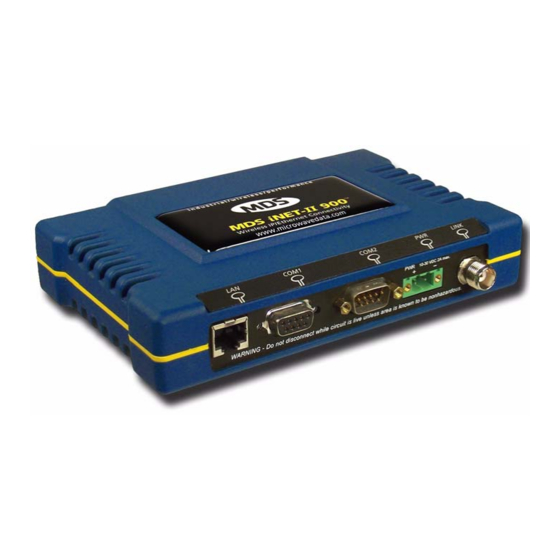
GE MDS iNET Series Wireless Radio Manuals
Manuals and User Guides for GE MDS iNET Series Wireless Radio. We have 2 GE MDS iNET Series Wireless Radio manuals available for free PDF download: Reference Manual, Setup Manual
GE MDS iNET Series Reference Manual (173 pages)
Wireless IP/Ethernet Transceiver
Brand: GE
|
Category: Transceiver
|
Size: 5.82 MB
Table of Contents
Advertisement
GE MDS iNET Series Setup Manual (4 pages)
Brand: GE
|
Category: Network Hardware
|
Size: 0.16 MB
Advertisement

